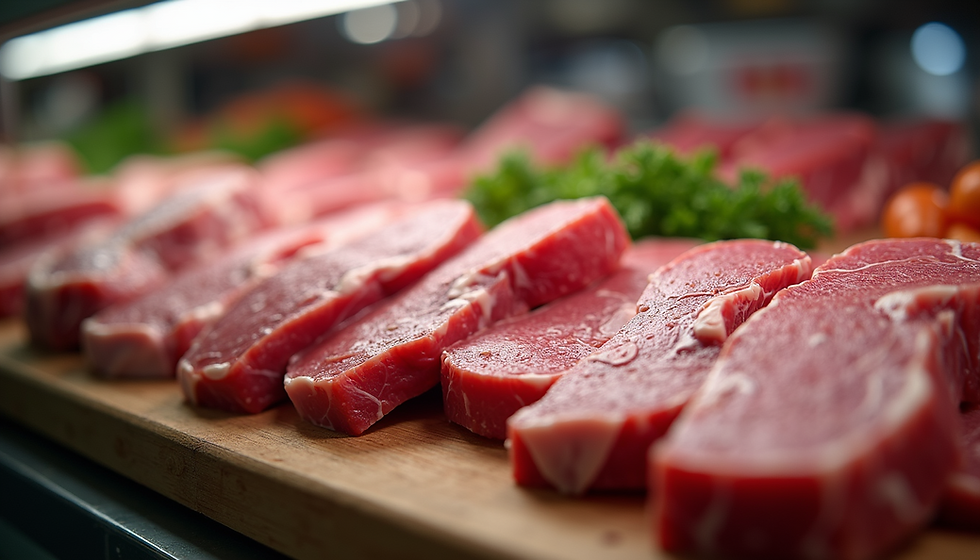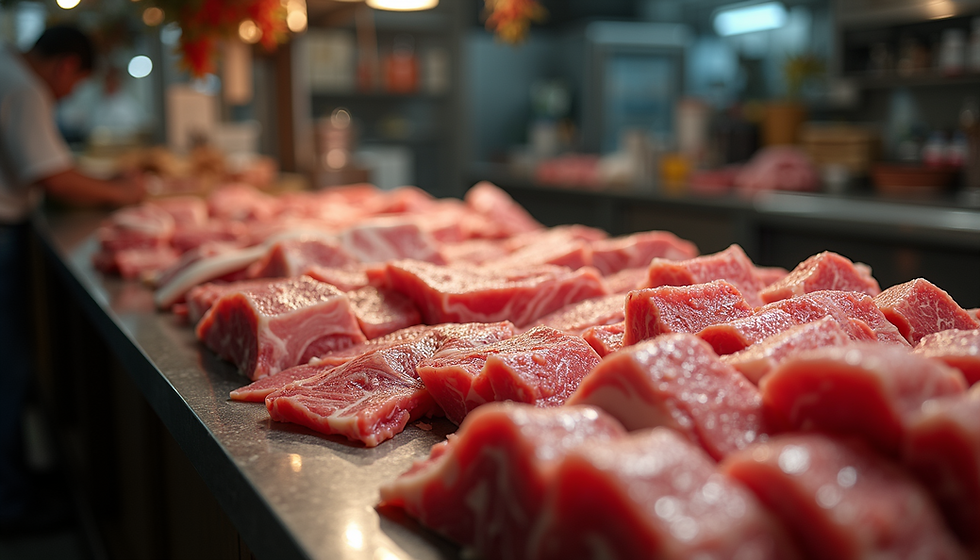A Look into Australia's Butchery Practices and Traditions
- Team @ Ezy Click Answers
- May 5
- 4 min read
Australia is known for its rich culinary heritage and diverse landscape, which influences its unique butchery practices. The role of butchers, with their deep-rooted traditions and expertise, is integral to Australia's food culture. In this blog post, we will delve into the various aspects of Australian butchery, exploring traditional methods, modern practices, and regional specialties.
Understanding Butchery Practices
Butchery in Australia dates back to colonial times when European settlers brought their meat processing techniques to the continent. Over the years, these practices have evolved, blending traditional methods with innovative techniques. Today, the butchery profession is characterized by craftsmanship, quality control, and adherence to food safety standards.
Some traditional methods include dry aging, where meat is hung in controlled environments to enhance flavor and tenderness. This practice is especially popular among those who appreciate high-quality cuts. In contrast, modern butcheries may use vacuum-packing and cryovac techniques to prolong shelf life while maintaining freshness.

Moreover, butcher shops often emphasize transparency regarding sourcing. Many local butchers pride themselves on using ethically raised livestock, which appeals to health-conscious consumers. This connection to the source of the meat adds value to the shoppers, who can trust the quality of what they purchase.
The Role of Local Butchers
Local butchers play a crucial role in Australian communities, offering personalized service and specialized products that large supermarkets do not provide. They are not just meat sellers but also community members sharing their knowledge about different cuts, cooking techniques, and even upcoming local food events.
In many regions, butchers adapt their offerings to cater to local tastes and preferences. For instance, in coastal areas, seafood may take precedence in their selection, whereas, in rural areas, lamb and beef might be more prominent. Additionally, many local butcher shops often collaborate with farmers, contributing to regional economies and sustainability initiatives.

Interactions between customers and butchers also enhance the shopping experience. Shoppers often ask questions about preparation methods and receive recommendations, making each visit informative and enjoyable. This personal connection fosters loyalty and supports the local economy in a way that supermarkets rarely do.
Is it Cheaper to Shop at the Butcher?
One common question prospective customers ask is whether shopping at a butcher is cost-effective. While prices may vary, shopping at a butcher can often be more economical for certain cuts of meat. Butchers frequently offer special deals on large quantities and have the ability to tailor orders based on customer needs, whether you're cooking for a family or preparing for a barbecue with friends.
Furthermore, the quality of meat from a butcher can result in less waste. A higher quality cut not only tastes better but can also require less trimming and preparation. However, prices can be higher when purchasing premium products. It’s advisable to compare prices and consider the type of meat you are seeking, as spending a little more upfront for quality may result in a better culinary experience.
However, it’s essential to note that while butchers may be more cost-effective for some cuts, supermarkets often have sales that can make certain products more competitive. The key is to stay informed and choose wisely based on dietary needs and preferences.
Regional Variations in Butchery
Australia's diverse landscape also reflects in its butchery practices, which vary regionally. In Queensland, for instance, you might find an array of tropical meats, including kangaroo and emu. These meats are not only popular among adventurous eaters but also considered leaner alternatives to traditional red meats.
In contrast, in Tasmania, the focus may shift to pasture-raised lamb, known for its tenderness and flavor. Often, local butchers in Tasmania will sell lamb with unique provenance stories, emphasizing the importance of local farming practices and sustainability.

Victoria is known for its craft butchers, who experiment with different cured meats, sausages, and artisanal products. Many Victorian butchers are also embracing the farm-to-table movement, providing a comprehensive experience that includes locally sourced produce alongside their meats.
In comparison, Western Australia is famous for its wild game, with fresh offerings of venison and boar available at various butcheries. This reflects the state's culture and connection to the natural wilderness, allowing consumers to experience unique flavors and dishes.
Techniques and Equipment Used by Butchers
Butchers employ a range of techniques that are essential for achieving high-quality results. Many traditional cuts require specific skills such as boning and trimming, and these techniques can vary based on the type of meat being processed. For example, breaking down a whole animal into various cuts requires knowledge of anatomy and muscle structure.
Modern butcher shops also rely on advanced equipment, including band saws, meat grinders, and vacuum sealing machines. These tools increase efficiency and help ensure that meat is handled safely. Additionally, some establishments still use traditional tools, like cleavers and knives, which require significant skill to operate effectively.
Training programs and apprenticeships play a vital role in preserving these techniques, with skilled butchers passing on knowledge to the next generation. Understanding the science of butchery, including aspects like meat aging and preservation, is crucial for a successful career in this field.
Celebrating Butchery Culture in Australia
As the demand for high-quality meat continues to rise, Australia’s butcher culture can look forward to a bright future. There is growing interest in local, sustainable practices and an increased appreciation for artisanal products, which can help keep traditional skills alive.
Events like the Australian Meat Industry Council’s Meat Industry Excellence Awards and local butchery competitions help promote these values and recognize the hard work of butchers across the nation. These celebrations not only highlight the craft but also foster community spirit, bringing people together to share culinary experiences.
For consumers interested in exploring their local butcher shop, consider visiting your nearest establishment and discovering the variety of products available. Engaging with the butchers and asking questions can lead to new culinary adventures, expanding your cooking repertoire while enjoying quality meats sourced from local farms.

Through understanding and embracing Australia's rich butchery traditions and practices, consumers can support local economies while enjoying high-quality meat products. So, the next time you consider where to purchase your next cut of meat, remember the vital role that butchers play in our food culture and the benefits they bring to our communities.
Visit a local butcher shop in Australia today and discover the flavors and traditions that make Australian butchery truly unique.



Comments